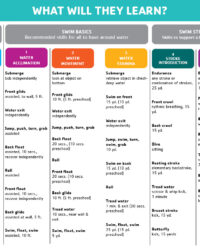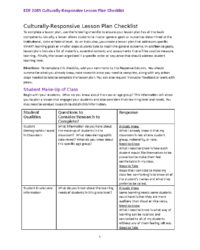Creating a well-structured lesson is arguably one of the most critical aspects of effective teaching. It’s more than just knowing your subject; it’s about guiding your students on a clear learning journey, anticipating their needs, and ensuring they grasp the material. Without a thoughtful roadmap, even the most passionate educator can find themselves adrift, and students might miss out on key concepts.
That’s where a robust framework comes in handy, and one of the most effective approaches is the “before, during, and after” model. This comprehensive strategy helps you compartmentalize your planning, execution, and reflection, ensuring no stone is left unturned. It provides a logical flow, making lessons more impactful and student learning more profound. Let’s dive into how this powerful approach can transform your teaching practice.
The Essential “Before” Phase: Laying the Groundwork for Success
The “before” phase of any lesson is where the magic of preparation truly happens. This isn’t just about jotting down a few notes; it’s a deep dive into understanding your learners, defining clear objectives, and meticulously gathering all necessary resources. Think of it as the architect’s blueprint for a building – every detail must be considered and planned out to ensure stability and functionality. A thorough “before” phase sets the stage for a smooth and effective learning experience, minimizing surprises and maximizing engagement.
One of the first steps in this preparatory stage is to thoroughly understand your audience. What are their prior knowledge levels? What are their interests? What learning styles resonate with them most? Tailoring your content and delivery method to your specific students is paramount for capturing their attention and facilitating genuine comprehension. Consider any potential misconceptions they might hold and how you can address those proactively.
Next comes the crucial task of setting clear and measurable learning objectives. What exactly should students be able to know, understand, or do by the end of the lesson? These objectives should be specific, measurable, achievable, relevant, and time-bound (SMART). Well-defined objectives not only guide your instruction but also help students understand the purpose of the lesson, empowering them to take ownership of their learning. This also forms the basis for your assessment strategies.
Finally, the “before” phase involves gathering all the necessary materials and resources. This includes everything from textbooks and worksheets to digital tools, manipulatives, and even the physical arrangement of the classroom. Thinking ahead about potential challenges, such as technology glitches or unexpected student questions, and having backup plans in place, can save valuable instructional time and reduce stress. When you use a comprehensive before during and after lesson plan template, you’re not just organizing your thoughts; you’re proactively addressing every potential variable.
Key Considerations for the “Before” Phase
- Identify learning standards and align them with your lesson objectives.
- Assess students’ prior knowledge through informal checks or pre-assessments.
- Select appropriate instructional strategies and activities that cater to diverse learning styles.
- Prepare all visual aids, handouts, and technological equipment.
- Plan for differentiation to support struggling learners and challenge advanced ones.
Engaging in the “During” and Reflecting on the “After”
Once the meticulous planning of the “before” phase is complete, the “during” phase is where all that preparation comes to life. This is the active teaching and learning period, where you implement your strategies, facilitate discussions, guide activities, and monitor student progress in real-time. Effective instruction during this phase involves not just delivering content but also actively engaging students, fostering a collaborative learning environment, and making on-the-fly adjustments based on student responses. It’s a dynamic interplay between instruction, student participation, and formative assessment.
During the lesson, it’s vital to employ a variety of teaching methods to keep students engaged and cater to different learning preferences. This might include direct instruction, group work, hands-on activities, problem-solving tasks, or multimedia presentations. Continuously check for understanding through questioning, observation, and quick formative assessments. This immediate feedback loop allows you to identify areas where students might be struggling and provide timely support or clarification, ensuring that everyone stays on track towards achieving the lesson objectives.
The “after” phase is equally critical, though often overlooked. This is the period for reflection, assessment, and follow-up. It’s when you evaluate the effectiveness of your lesson, not just in terms of what students learned, but also how well your instructional strategies worked. This phase involves analyzing student performance on assessments, reflecting on your own teaching, and planning next steps. It’s a cyclical process where the insights gained from one lesson inform the planning of the next, leading to continuous improvement in your teaching practice.
Elements of the “During” and “After” Phases
- During:
- Implement chosen activities and strategies.
- Actively monitor student engagement and understanding.
- Provide clear instructions and effective transitions.
- Facilitate discussions and encourage critical thinking.
- Conduct formative assessments to gauge learning in real-time.
- After:
- Administer summative assessments to measure learning outcomes.
- Provide constructive feedback to students.
- Reflect on lesson effectiveness: What worked well? What could be improved?
- Analyze student data to inform future instruction.
- Plan for remediation or enrichment activities based on assessment results.
Embracing the before, during, and after framework for your lesson planning transforms teaching from a series of isolated events into a coherent, purposeful journey. It provides a robust structure that supports both educators and learners, promoting deeper understanding and more effective knowledge transfer. By meticulously preparing, actively engaging, and thoughtfully reflecting, you create a learning environment where every minute counts and every student has the opportunity to thrive.
Ultimately, this holistic approach to instructional design empowers you to deliver high-quality, impactful lessons consistently. It builds confidence in your teaching abilities and fosters a sense of accomplishment as you witness your students grow and succeed. Implementing this comprehensive model is an investment in both your professional development and the academic success of those you teach.


